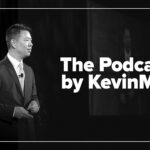I was on the phone with my sister when I thought I heard a knock at the door. Then another. My dogs barked, and I told her, “Don’t hang up.” My chest tightened. Nightmares of someone coming for me flashed through my mind—a stranger lurking in the dark.
After more than 40 years as a nurse, transitioning from the chaos of the ER to the intensity of the ICU, I thought I was ready for something different, something less physically demanding as I neared retirement. I took a job in behavioral health, a field I thought would be calmer. Instead, it was its own kind of battlefield—the intensive care unit of the mind.
My patients were the very sick: psychotics, schizophrenics, and prisoners. Murderers and rapists. People living entirely in their own distorted universes. Some days went smoothly, but most were unpredictable. Many were terrifying.
Every day, before I clocked in, I prayed. I prayed for safety—for myself, for my colleagues, for everyone on the unit.
The night that changed everything started like any other.
Jerome, one of my patients, was a prisoner. Like many others, he knew how to game the system. Wrap a pillowcase around your neck, claim you’re suicidal, and you’d be admitted to our unit. They called it the “Hilton Hotel.” A private room with a shower, three hot meals a day, snacks, therapy sessions, and medications. A two-week vacation away from the filth and deprivation of their prison cells.
That night, Jerome began acting out. Six feet tall and muscular, he erupted in a fit of rage, tossing chairs and tables across the day area.
We called security. “Stat,” we told them.
But security was stationed on the first floor, while our unit was on the seventh. Help was minutes away when we needed them in seconds.
I ran to prepare an injection. Two security officers finally arrived and flanked Jerome, one on each side. He lifted the sleeve of his gown and said, “OK, I’m ready.”
I moved forward, syringe in hand, aiming for his arm.
Then I saw his fist.
It was coming straight for my face.
“Oh no,” I managed to think, before the impact sent me sprawling to the floor. My glasses flew across the hallway, skidding out of his room.
“Code gray! Code gray!” The announcement echoed over the loudspeakers as staff rushed in.
They picked me up off the floor, my thoughts spinning. Disheveled and dazed, I was wheeled down to the ER. My left jaw was swollen and bruised, but the CT scan showed no fractures. The ER doctor discharged me with a simple, “You’re fine.”
I wasn’t fine.
The next morning, I called out sick and took two days off, but I had to use my own PTO. I didn’t feel any safer when I returned. Random violence had become a fact of life on the unit. We begged our manager to assign security to our floor 24/7.
“It’s not in the budget,” we were told.
I wrote to the hospital’s CEO, pleading for help. I described the chaos, the danger, the risk to patients and staff alike. There was no reply.
Instead, I was reprimanded by my manager. “The CEO isn’t in our chain of command,” she scolded.
I began waking up at 3:00 a.m., night after night, jolted awake by the image of Jerome’s fist coming toward me.
I started therapy through the employee assistance program. The counselor was kind and helpful, but the trauma lingered. I couldn’t stop thinking about how close I had come to something far worse. If I stayed, I was convinced it was only a matter of time before someone snapped my neck.
And then, it would be “game over.”
So I retired. After 47 years as a nurse, I walked away.
That night, the knock I thought I heard on my door wasn’t real. It was just the wind, rattling my Christmas wreath.
But the fear is still with me.
And that hospital unit? It’s still dangerous. Still without dedicated security.
Because, as they say, “It’s not in the budget.”
Debbie Moore-Black is a nurse who blogs at Do Not Resuscitate.



















![Preventing physician burnout before it begins in med school [PODCAST]](https://kevinmd.com/wp-content/uploads/The-Podcast-by-KevinMD-WideScreen-3000-px-4-190x100.jpg)


![Why high-quality embryos sometimes fail to implant [PODCAST]](https://kevinmd.com/wp-content/uploads/Design-3-190x100.jpg)
